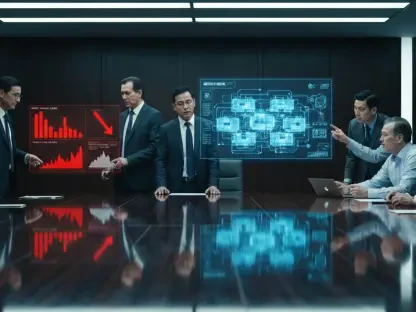In the ever-evolving landscape of cybersecurity, few companies have made as indelible a mark as Palo Alto Networks Inc., a titan in the industry that recently announced the retirement of its founder and Chief Technology Officer, Nir Zuk. This unexpected transition comes at a time when the company is riding high on financial success and strategic expansion, raising questions about the timing of such a significant leadership change. With annualized revenue surpassing $10 billion and a monumental acquisition on the horizon, the departure of a visionary leader like Zuk is a pivotal moment for the organization. This article delves into the factors surrounding his retirement, exploring the legacy he leaves behind, the financial milestones achieved under his tenure, and the future direction under new leadership. As cybersecurity threats grow more sophisticated, understanding the implications of this shift offers critical insights into the company’s trajectory in a competitive market.
Leadership Transition at a Critical Juncture
A Foundational Legacy in Cybersecurity
Nir Zuk’s nearly two-decade journey with Palo Alto Networks has been nothing short of transformative, taking the company from a nascent firewall provider to a global cybersecurity leader serving approximately 75,000 organizations. Since founding the company in 2005, Zuk’s innovative vision reshaped how businesses approach network security, introducing solutions that adapted to an increasingly complex threat landscape. His role as Chief Technology Officer was instrumental in driving technological advancements that positioned the company at the forefront of the industry. The timing of his retirement, coinciding with significant milestones, suggests a deliberate decision to step away at a peak, leaving behind a robust foundation. This transition prompts reflection on how his strategic foresight not only built a powerhouse but also set a high bar for future innovation in a field where staying ahead of threats is paramount.
Passing the Torch to New Leadership
As Zuk steps down, the mantle of Chief Technology Officer passes to Lee Klarich, who has served as Chief Product Officer since 2017 and now joins the board of directors. Klarich’s extensive experience within the company and deep technical expertise make him a natural successor, as noted by lead independent director John Donovan, who emphasized Klarich’s readiness to steer technological vision. This change in leadership is not merely a replacement but a continuation of a legacy, with Klarich poised to build on existing strengths while navigating emerging challenges in cybersecurity. His appointment at this juncture, when the company is expanding its market reach, indicates a focus on maintaining innovation momentum. The transition reflects a strategic alignment, ensuring that the core values and forward-thinking approach that defined Zuk’s era remain integral to future endeavors, even as the industry evolves rapidly.
Financial Triumphs and Strategic Growth
Record-Breaking Financial Performance
Palo Alto Networks’ fiscal fourth-quarter results paint a picture of financial vigor, with a 16% year-over-year revenue increase to $2.54 billion, slightly outpacing analyst expectations of $2.5 billion. This growth was largely driven by the Next-Generation Security segment, particularly in network security products, which saw an impressive 35% revenue surge to $3.9 billion annually. A notable trend is the company’s success with high-value clients, evidenced by a 51% rise in organizations spending over $5 million annually on these products, totaling 156 customers. Adjusted net income also exceeded forecasts at $673 million, or 95 cents per share, against predictions of 88 cents per share. This financial robustness at the time of Zuk’s retirement underscores a company in peak condition, likely influencing the decision to transition leadership from a position of strength rather than necessity, setting a solid base for future growth.
Strategic Expansion Through Acquisition
Complementing its financial success, Palo Alto Networks has embarked on a bold strategic move with a $25 billion agreement to acquire CyberArk Software Ltd., expected to close in the second half of the current fiscal year. This acquisition aims to enhance capabilities in managing access to business applications and the public web, while integrating a customer base of about 10,000 organizations, including over half of the Fortune 500. This expansion is a clear signal of the company’s ambition to broaden its cybersecurity solutions and solidify market dominance at a time of leadership change. The timing of Zuk’s retirement alongside this deal suggests confidence in the company’s strategic direction, ensuring that new leadership inherits a platform poised for greater reach. Such a move not only diversifies offerings but also positions the organization to address a wider array of security challenges in an increasingly interconnected digital world.
Looking Ahead: A New Era of Innovation
Sustained Momentum Under Fresh Guidance
With Lee Klarich at the helm as Chief Technology Officer, Palo Alto Networks appears well-prepared to sustain its momentum, building on the financial and strategic groundwork laid during Zuk’s tenure. The company projects continued growth, anticipating adjusted earnings of 88 to 90 cents per share on revenue up to $2.47 billion for the current quarter, surpassing analyst estimates. This optimistic outlook reflects a commitment to innovation and client-focused solutions that have long defined the organization’s success. Klarich’s leadership will likely focus on integrating acquisitions like CyberArk while pushing the boundaries of cybersecurity technology. As threats evolve, maintaining this proactive stance will be crucial, and the transition offers an opportunity to infuse fresh perspectives into long-standing strategies, ensuring relevance in a dynamic industry landscape.
Navigating Future Challenges and Opportunities
Reflecting on Nir Zuk’s retirement, it marks the end of a defining chapter for Palo Alto Networks, yet it also opens doors to new possibilities under leadership equipped to tackle future challenges. The impressive fourth-quarter performance, coupled with strategic acquisitions, demonstrates resilience and foresight that position the company for sustained success. Looking back, the decision to step down at a high point ensures a legacy of strength, allowing successors to focus on emerging opportunities rather than overcoming setbacks. Moving forward, stakeholders should monitor how the integration of new assets and technologies shapes market positioning, while anticipating how Klarich’s vision adapts to an ever-changing threat environment. This period of transition, grounded in past achievements, sets a precedent for proactive adaptation, offering a blueprint for navigating the complex cybersecurity landscape ahead.









